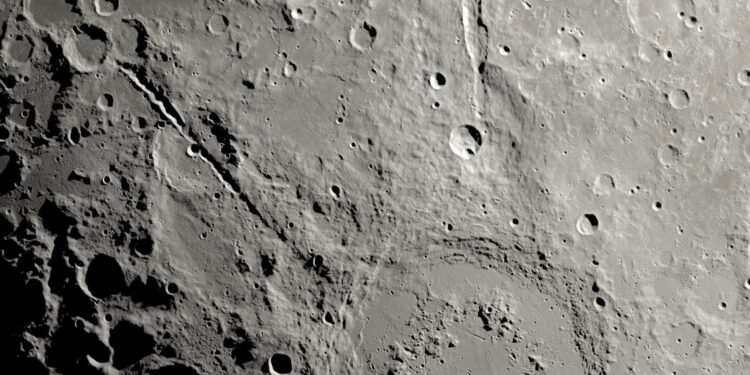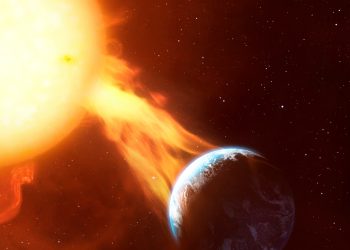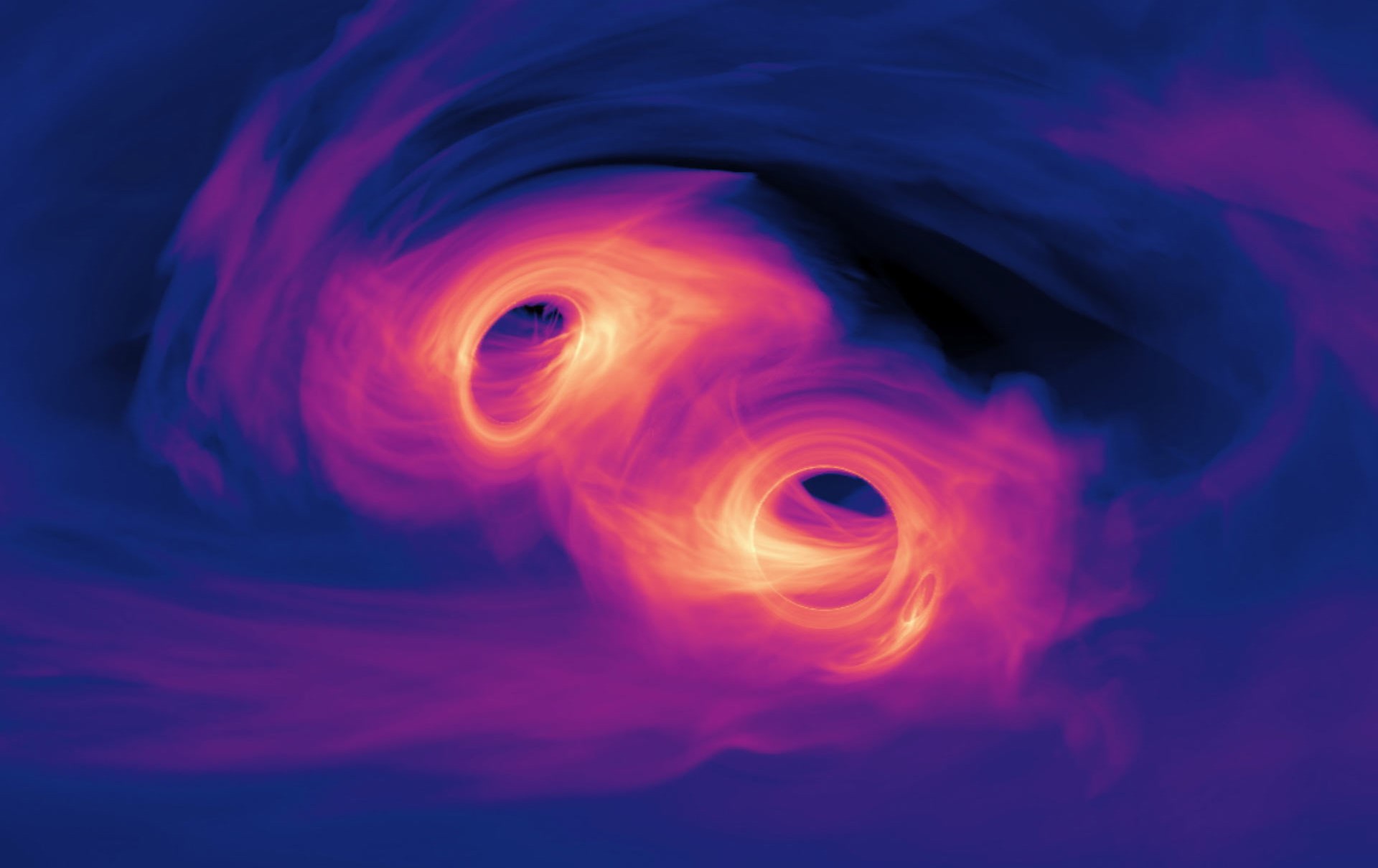Using photogeological mapping, planetologists have studied the structure and constructed a scenario for the formation of Vallis Schrödinger and Vallis Planck, which are large lunar valleys located in the southern polar region. They appeared during the formation of the Schrödinger impact crater, apparently as a result of extremely powerful asymmetric emissions with energies of about 10 20 -10 21 joules in approximately 10 minutes.
The authors of the study note that the distribution and structure of the Schrödinger crater emissions are of interest in terms of collecting soil samples for the missions planned within the framework of the Artemis program.
A violent impact reshaped the surface of the Moon
The Schrödinger crater is located on the far side of the Moon, on the edge of the vast South Pole-Aitken impact basin, approximately 300 kilometres from the pole. It is 320 kilometres in diameter, about 4.5 kilometres deep, and is estimated to be 3.81 billion years old. The crater is surrounded by an asymmetrical ejecta layer extending for 500 kilometres, although ejected material not detected by orbital imaging may be present at a greater distance.
The ejecta resulted in multiple secondary impact events, some of which formed long depressions called valleys radiating from the crater. The longest of these are the Vallis Schrödinger and Vallis Planck. They are 270 and 280 kilometres long, about 20 and 27 kilometres wide, and about 2.7 and 3.5 kilometres deep, respectively.
Spectral studies have revealed heterogeneity of the material in the Schrödinger crater and surrounding areas. This material not only contains traces of later volcanic activity but also carries information about the most ancient events in the geological history of the Moon. The fact is that during the formation of the crater (presumably as a result of the fall of a body with a diameter of about 25 kilometres at a speed of 15 kilometres per second), rocks of the lunar crust were exposed from a depth of up to 30 kilometres. In addition, ancient ejecta from the South Pole-Aitken impact basin, which includes mantle material, were scattered across the surface.
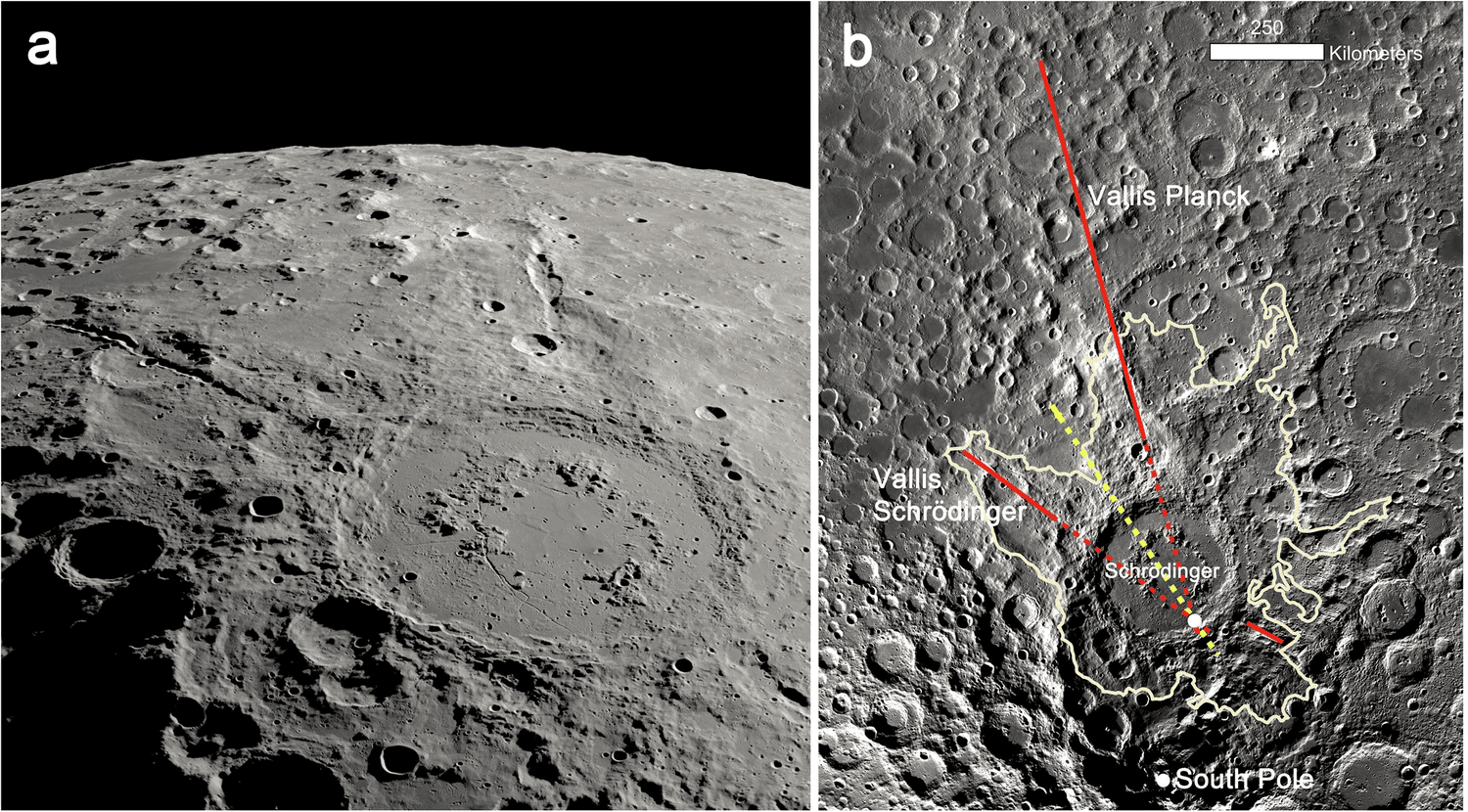
To clarify the distribution of the Schrödinger crater’s ejecta and the model of its formation, American and British planetologists used photogeological and topographic mapping of its secondary structures, the Schrödinger and Planck valleys, based on data from the Lunar Reconnaissance Orbiter. The diameters, depths, and distances to the centre of the Schrödinger crater and to the intersection point of the rays that continue the valleys were measured for all secondary craters that form the valleys. Based on the results obtained, the scientists calculated the speeds and directions of material ejecta from the Schrödinger crater.
It took approximately 10 minutes for the Moon’s Grand Canyons to form
For the ejecta that formed Vallis Schrödinger, the ejecta velocity ranged from 0.95 to 1.05 kilometres per second, and the angle at which the material was ejected ranged from 45 to 20 degrees (given the circular shape of the secondary craters, the ejection angle was probably closer to the upper limit of this range). The flight time of the debris ranged from 4.9 to 15.0 minutes.
The maximum velocity of the ejecta that formed Vallis Planck was higher (1.23–1.28 kilometres per second), and the material travelled a greater distance in a time of 5.2 to 15.4 minutes. The duration of the secondary bombardments in both cases did not exceed five minutes.
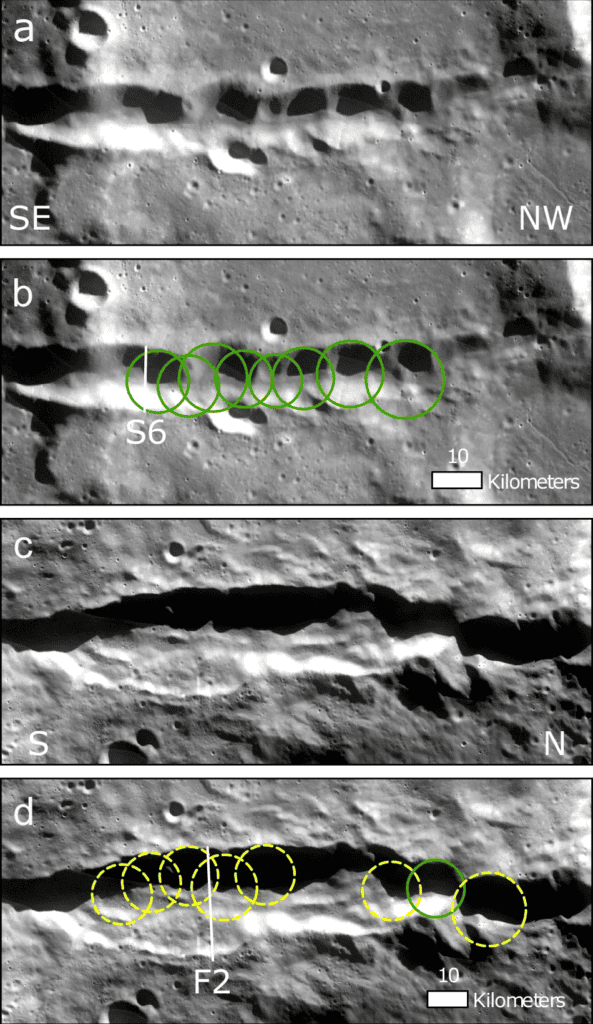
At such ejection velocities, theoretical estimates of the average size of the ejected fragments range from 0.02 to 0.05 times the diameter of the primary impactor, in this case from 0.5 to 1.25 kilometres. This is consistent with the diameters of the secondary craters in Vallis Planck, as most of them are less than two kilometres. On the other hand, the estimated sizes of the debris that resulted in the formation of Vallis Schrödinger are significantly larger than theoretical: 2.3–5.2 kilometres.
Apparently, this valley, located closer to the point of the asteroid impact, was formed as a result of a nearly simultaneous impact of an entire cluster of ejected fragments, rather than a series of individual falls. The debris was tightly grouped since the secondary craters overlap each other greatly. In contrast, in the remote part of Vallis Planck, the secondary craters were formed as a result of the falls of individual fragments, rather than a continuous stream of ejecta.
Calculations have shown that for the formation of Vallis Schrödinger, the kinetic energy of the ejected material must have been 3.39×10 20 joules, and for Vallis Planck – about 1.21×10 21 joules. The axes of the valleys, indicating the direction of the emissions, converge not in the centre of the Schrödinger crater, but at its edge, where the primary impact occurred.
The direction of the asteroid’s flight was also established along the line connecting the centre with this point: south-southeast-north-northwest. Its fall at a small (less than 45 degrees) angle caused not a point explosion, but the appearance of a distributed impact zone and an asymmetric pattern of the distribution of emissions.
Clarification of this pattern will help to detail the stratigraphy of impactites in the region and more effectively plan the collection of soil samples during future missions, in particular, within the framework of the Artemis program.
Join the Conversation!
Have something to share or discuss? Connect with us on Facebook and join like-minded explorers in our Telegram group. For the latest discoveries and insights, make sure to follow us on Google News.



